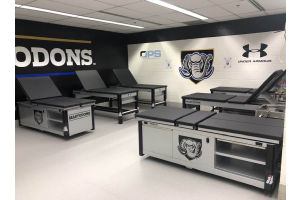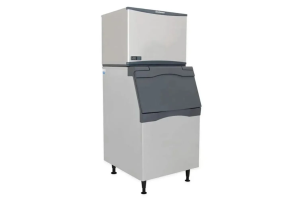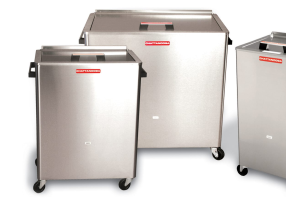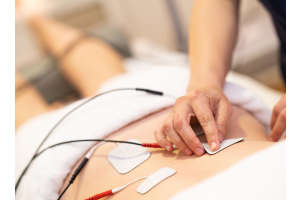Electrical Stimulation for Edema Management Protocols
The following information was presented by Dr. Joe Gallo of Salem State University and is reprinted here with his permission.
Two two edema management protocols are outlined below. Both are based on producing muscle contractions submaximal muscle contractions around the muscles surrounding the swollen knee joint. You can use two electodes or 4. Generally we put the electrodes over the anterior lateral and anterior medial aspect of the knee. Also attaching an article on how to add NMES for the quadriceps as an addition to standard care/rehab. A clinician may want to use this approach to reactivate the weak inhibited quad and accelerate quad strength recovery - this will also help to move some swelling and address the issue of quad weakness and atrophy that can happen after ACL surgery. The parameters below can all be programmed into the Intensity Select Combo II.
Electrical Stimulation for Edema Management Protocols
| Waveform: | Symmetrical Biphasic |
| Phase Duration: | 200µs |
| Frequency: | 35-50 pps |
| Amplitude: | Visible submaximal motor (approx.. 10% MVC) |
| On Time: | 2-5 seconds |
| Off Time: | 2-5 seconds |
| Ramp: | at least 1 second |
| Duration of Rx: | 20-30 minutes, 2-3 times per day |
Clinical Application Notes:
- Indicated for sub-acute or chronic swelling
- Electrode placement over proximal muscle belly and or muscles surrounding draining veins.
- Indicated for edema due to lack of muscle contraction in the local area
References (Contract-Relax Muscle Pump Protocol):
Shapiro S, Ocelnik. Electrical currents for tissue healing. In M.H. Cameron (ed.), Physical agents in rehabilitation: from research to practice 4th edition. St. Louis, MO: Elsevier; 2013; 267-272.
Option #2: Continuous Twitch Muscle Pump Protocol (pulsed Current)
| Waveform: | Symmetrical Biphasic |
| Phase Duration: | 200-300 µs |
| Frequency: | 2 pps |
| Amplitude: | Submaximal Motor with rhythmical twitching (approx 10% MVC) |
| On/Off Time: | None |
| Duration of Rx: | 20 minutes 2-3 x's per day |
Clinical Application Notes:
- Indicated for sub-acute or chronic swelling
- Electrode placement over proximal muscle belly and or muscles surrounding draining veins.
- Indicated for edema due to lack of muscle contraction in the local area
- Increase intensity to “tremor like” twitching
- Similar parameters to Motor TENS. In addition to potentially moving swelling, patient will also receive benefits of opiate level pain modulation.
References (Continuous Twitch Muscle Pump Protocol):
Starkey C. Therapeutic Modalities. 3rd ed. Philadelphia, Pa: F.A. Davis; 2004.
Additional resource:





















